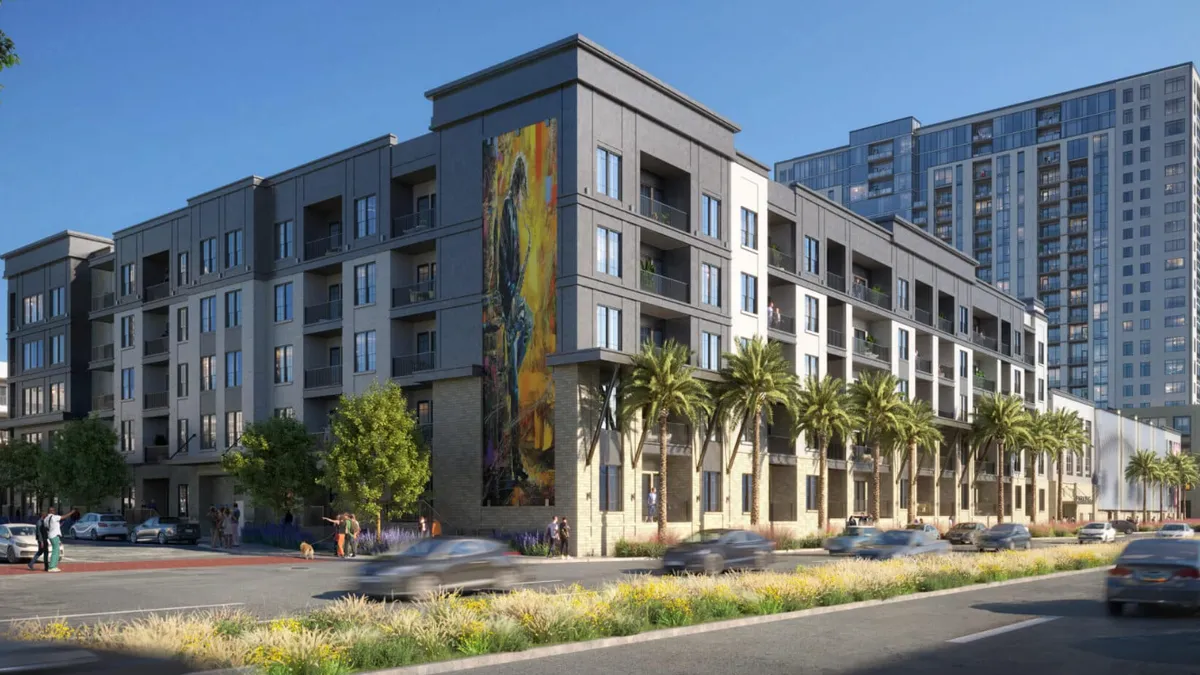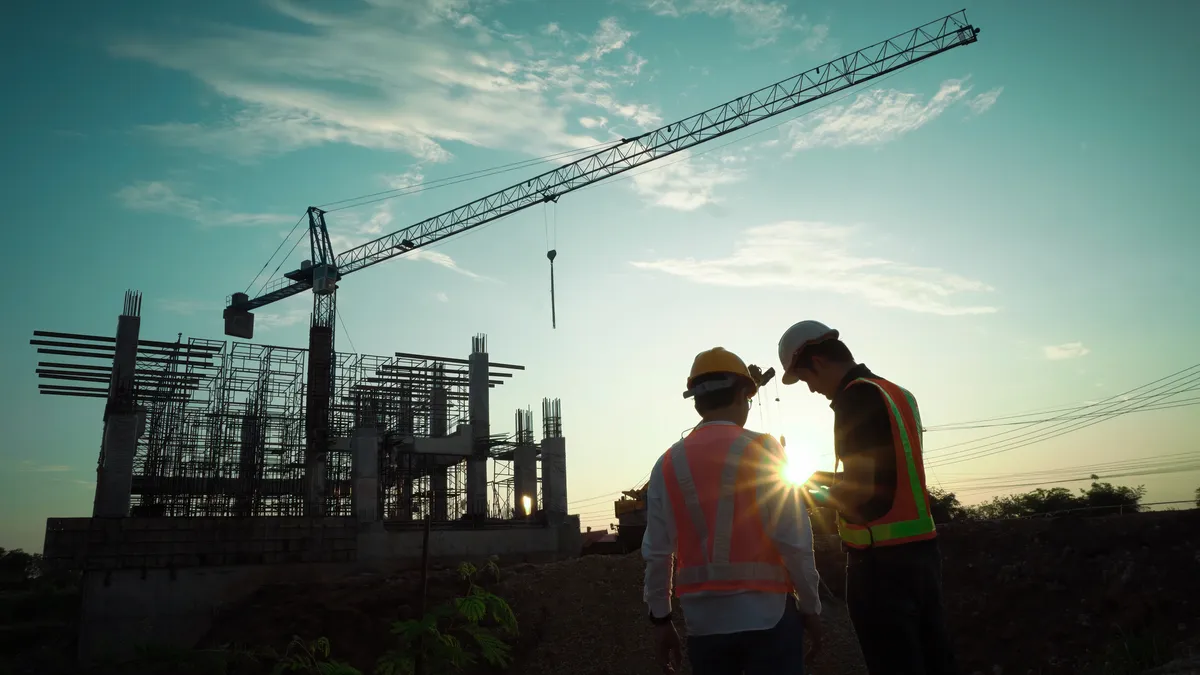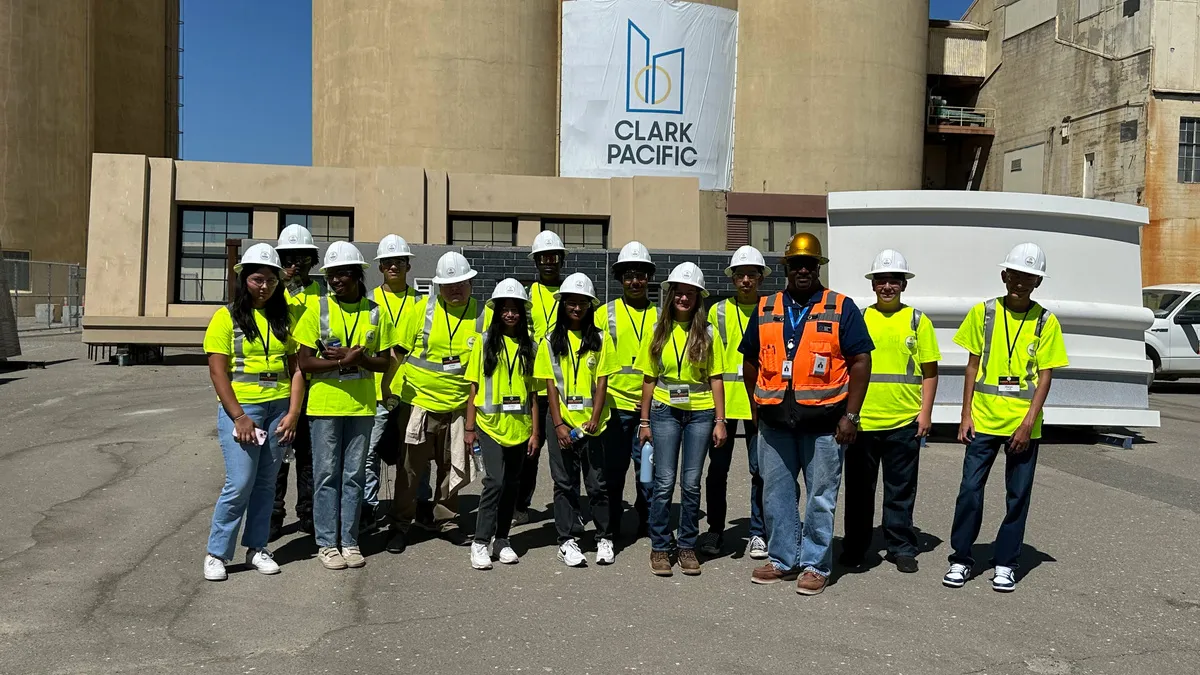Aging in place has a perception problem. The number of older Americans is steadily growing as the baby boomer generation ages. Yet that group has, by and large, proven reluctant to renovate their homes to accommodate eventual changes in mobility, even though many say they want to stay in their current residence for the long-term. Budget is one concern holding them back, as is the hesitance to be proactive about meeting their own future needs.
Builders and remodelers can address clients’ desire to age in place while allaying their concern over the value of the related investment by broadening its scope. By shifting the focus from getting old to getting smart, builders and remodelers interviewed by Construction Dive said they can help clients understand how accessible-design features — such as shower grab bars, wider doorways and zero-step entrances — can be useful to all ages and physical conditions while boosting the value of their home.
“When we ask people if they want to age in place, they say yes. But if you ask what they’re doing about it, the answer is they’re not,” said Marianne Cusato, associate professor of practice at the University of Notre Dame’s School of Architecture and the author of HomeAdvisor’s 2016 Aging In Place Report. “Changes that make life better for everyone now and will continue to be helpful as the population ages is a different way to look at it.”
Redefining the market
Aging will be a major driver behind the push for universal design upgrades in the coming years. In the next two decades, one-third of American households will be headed by someone age 65 or older, according to a December 2016 report on housing for an aging population from the Joint Center for Housing Studies of Harvard University. Additionally, the number of households age 80 and older will increase two-fold, from 7.8 million in 2015 to 16.2 million by 2035. On top of all that, life expectancies are increasing (though 2015, the most recent year on record, may be an exception).
Homeowners are staying put. In HomeAdvisor’s report, six in 10 owners older than 55 (61%) said they don’t have plans to leave their home, while eight in 10 (78%) have not carried out renovation work related to aging in place. Among those who have not completed such work, four in 10 (40%) said they don’t have a physical disability and thus don’t think they need it and two in 10 (20%) said they don’t think they are old enough to require such features. The number of older households in which at least one member has a disability is projected to grow by 76% to 31.2 million by 2035, with half of that increase occurring in the next eight years, according to the JCHS.
“When we ask people if they want to age in place, they say yes. But if you ask what they’re doing about it, the answer is they’re not."

Marianne Cusato
Associate professor of practice, University of Notre Dame School of Architecture
Age is just one factor. Universal design earned its moniker for its broad application. Disabilities, pregnancy, injury and other temporary or permanent conditions can impact how occupants engage with a space. For example, one in eight adults has a mobility-related disability, according to a July 2015 report from the Centers for Disease Control and Prevention. Designing homes to anticipate the space needs of multiple groups is a key tenant of universal design. Features that make it easier for an older person with limited mobility to open a door can help someone who uses a wheelchair, a parent juggling kids and groceries, and a 20-year-old on crutches.
Meanwhile, the country’s housing stock remains largely inaccessible. The JCHS report noted that less than 4% of single-family homes included the following three key accessibility features: single-level plans, wide hallways and doors and zero-step entrances. According to the builders and remodelers surveyed by HomeAdvisor, clients are more likely to reach out if or when they or a family member acquires a condition that impacts their mobility than they are in anticipation of one day having one.
Tyler Owen, owner of Aging-In-Place Remodeling, an accessibility remodeling company in Southern California, said that just 10% of his business comes from clients who are planning ahead. That jives with responses to the HomeAdvisor survey, which noted that for 20% of professionals, homeowners contact them about such projects before they are compulsory. Conversely, 33% said owners reached out in response to the diagnosis of a degenerative condition, while 25% cited a hospitalization and 19% said the call came following a recent medical scare or a fall.
“These changes need to happen in all houses because someday, everyone is going to have to face this, whether it’s aging or they sprain an ankle or twist a wrist,” said Erik Listou, co-founder of education and awareness organization the Living In Place Institute.
What needs an upgrade?
When discussing general renovations, builders and remodelers can educate clients on universal design options and help them consider possible future needs. “When I’m meeting with someone about a remodel, I plant the seed to consider improvements today that could pay off down the road, like adding a layer of plywood [to the walls] during a bathroom renovation for future grab bars,” said Robert Criner, owner of Criner Remodeling, in Newport News, VA.
For owners in the 55-plus category who have considered an aging-related renovation, according to Home Advisor, the bathroom is top of mind (48%) followed by entrances or stairways (24%), the kitchen (20%), home exteriors (16%) and, less often, the entire home (9%). Within those spaces, tub or shower grab bars, a shower seat, raised toilets, adjustable or handheld shower heads, rollout and rotating trays, stairway handrails and low-maintenance landscaping are of particular interest.
Remodelers thinking about adding universal design services to their repertoire should do their homework first.
“You need to understand the products available, the purpose they serve and how they interact with your customers,” Owen said. “And [customers’] needs will continue to change as they age, so you want to adapt their homes to span the test of time.”
“When I’m meeting with someone about a remodel, I plant the seed to consider improvements today that could pay off down the road."

Robert Criner
Owner, Criner Remodeling
Education should be the first step to bolstering universal design services, Criner said, adding that those who choose to take the plunge will be better remodelers for it. He recommends the National Association of Home Builders’ Certified Aging-in-Place Specialist program, which includes education on design-build solutions, business management and marketing and communications. “Builders also need to stay up to date on all the available products,” he said. “There used to be only four choices. Now there are 400.”
Additionally, the LIPI offers its Certified Living in Place Professional training and certification program for stakeholders including remodelers, inspectors and medical professionals. The program aims to build on the foundation of universal design. “You learn how to help the aging population but everybody else, too,” Listou said.
Technology can be a helpful tool for clients in managing the aging experience, as well as for improving accessibility for individuals with disabilities or those otherwise in need of automated assistance. It’s important to understand (and be realistic about) clients' needs and their current comfort level with tools and systems such as voice-activated home assistants, occupancy and daylight sensors, smart thermostats, integrated security systems and other internet-enabled products.
“We’re often working with people who aren’t comfortable with technology or see it as something complicated to learn,” said Owen, who added that technology is not yet being applied broadly in universal design applications. He notes that the most common product his company works with is lighting. One reason for the limited pickup in tech for universal design, according to HomeAdvisor, is the perception of it as a “luxury” product, with 29% of respondents saying tech products are “too expensive” to purchase and 25% saying they are “too expensive” to install.
A more recent report from the JCHS noted that remodelers are seeing demand for home automation as a specialty service, with 28.4% citing it as a growth segment. For older households, the report called out the monitoring of security, medication, health and awareness and general environmental conditions as potential roles for home tech. Meanwhile, 41.2% of respondents to the same report identified aging-in-place services as an area of growing demand.
“We’re often working with people who aren’t comfortable with technology or see it as something complicated to learn."

Tyler Owen
Owner, Aging-In-Place Remodeling
Builders and remodelers can also help homeowners review the types of financial assistance — such as tax credits, loans and grants — available to help offset modification costs, Cusato said. The median annual income for 65-plus households was $38,900 in 2014, with more than half in that age group considered low-income, according to the JCHS. Meanwhile, more households today are paying on their mortgage into retirement as compared to previous decades, and the amount of those payments has also increased.
With regard to aging in place, builders and remodelers must have frank conversations with clients about the hurdles they face in managing that process — from acknowledging their own eventual fallibility to building in or adding features that anticipate future needs, and doing so with affordability in mind. “We need to be able to talk about what those problems are and the solutions,” Criner said.
Looking to the future of aging in place
For builders and remodelers, steady population growth in the coming decades along with a greater emphasis in the industry around universal design for all life stages suggests that business opportunities are in the pipeline. The National Association of Home Builders’ 55+ Housing Market Index, for one, is optimistic about potential in the sector for new single-family homes, closing out 2016 with an eight-point jump to a mark of 67 — ahead of the breakeven score of 50.
Remodelers, too, are expected to attain value from universal design work. In its 2017 Cost vs. Value Report, Remodeling found that the average cost of the 24 repair and renovation projects it has tracked for the last six years increased 3% from 2016 to 2017 while their resale value rose 4.2%.
Keeping up with building trends, this year the report added a universal design bathroom project in its breakdown, calculating an average cost of $15,730 and value of $10,766 for a resale payback of 68 cents on the dollar. The cost estimate for that project covered widening the doorway, reinforcing the walls for grab bars, swapping in a zero-threshold shower with a fold-down seat, adding a taller toilet unit and installing a sink with clear floor space underneath.
The slight increases Remodeling notes reflect improvement from the recession years but there is still a way to go in strengthening the category's bottom-line value. More demand, of course, would help. The residential remodeling market reached a record high in 2015 at $340 billion in home improvement and repair work, according to the JCHS, with the 55-plus cohort expected to account for 56% of that spending by 2025, compared to its 31% share of the total market in 2005.
The need for aging-in-place remodels is only going to get stronger — even if they’re never called that. As Owen noted, universal design is where the value proposition is to be found. “Builders will need to figure out how they want to handle aging-in-place projects as boomers start passing through this timeline,” he said.

















